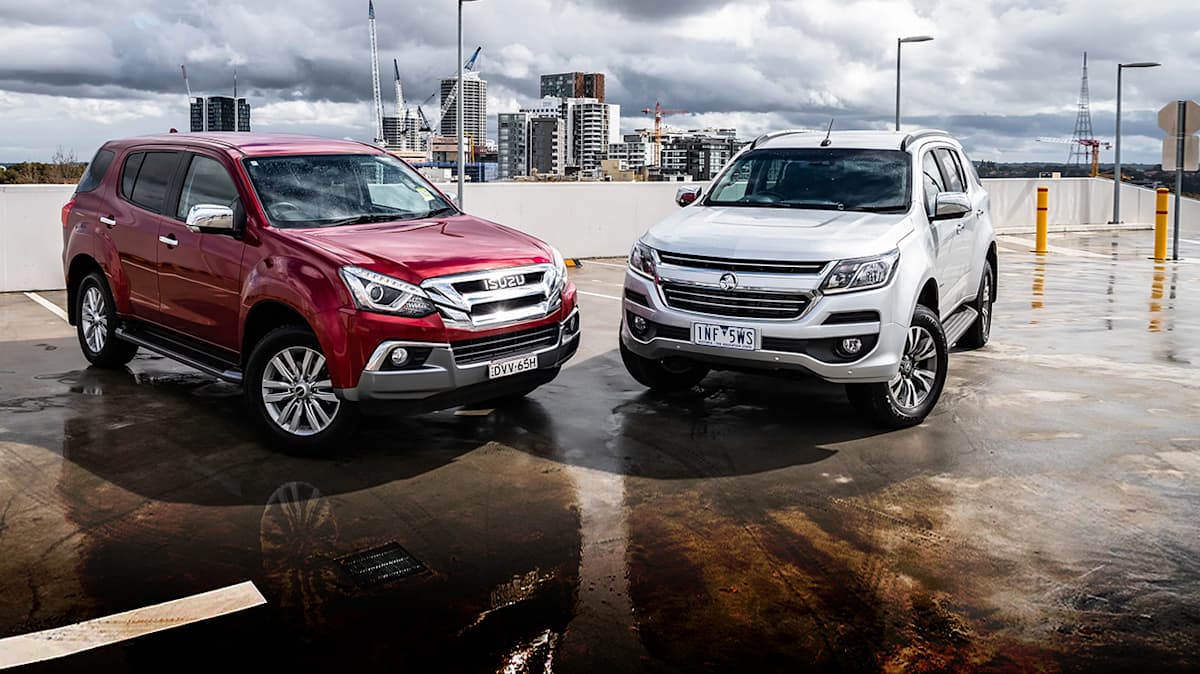
Isuzu MU-X LS-U vs. Holden Trailblazer LTZ towing comparison
For this comparison, our colleagues at Jayco Nowra let us borrow a 2019 Jayco Journey Outback caravan (model designation 21.66-3). It has a stroke of 8315 mm, a dead weight (empty) of 2600 kg and a ball joint load of 190 kg.
The price of one of these vacation caravans is usually $67,490, but you can personalize it with add-ons and add-ons if you like.
He proved to be a worthy companion in this ordeal and pushed our machines almost to the limit of their towing capacity.
But how each of the two cars handled the load was noticeably different given the fact that they are essentially twins inside, rolling on the same production line in Thailand.
Both have a ladder frame chassis with independent front suspension and multi-link rear suspension, unlike the models they are based on, and both have leaf spring rear suspension (and both have even more towing capacity as a result).
The Isuzu ride was relaxed and enjoyable. I was surprised how light it felt given the weight in the rear and the relative lack of torque compared to its rival here.
The Isuzu ride was relaxed and enjoyable.
Its suspension is softer and more supple overall, resulting in a more relaxed driver and passenger experience. There was some nose-to-tail wobble on big bumps, but it handled small bumps in the pavement really well, including small potholes.
And its steering, while blunt and heavy in normal driving, is really well thought out and comfortable to use when towing, with good weight and consistency, and good center feel.
The engine was arguably the biggest disappointment overall - not only because of its great fuel consumption, but also because it's annoyingly loud. It has a bit to do with the transmission because it will latch onto the gears a bit longer than the Holden. It doesn't offer the same gradient braking capabilities that you'll find in the Holden, but the brakes
The biggest problem, however, is engine noise, and the level of noise isolation from road surfaces and wind is impressive for a vehicle of this shape and size.
On the whole, the Holden was less pleasant - in fact, it was rather tiring to ride with such a load in tow.
It was rather tiring for Holden to ride with such a load in tow.
This was mainly down to the chassis, which provided a surprisingly erratic ride on surfaces that were as close to ideal NSW country road driving as could be. The suspension is stiff and constantly loaded, never letting the rider or passengers relax, which is a problem if you plan to ride the open road for months on end. And on our short off-road, Holden's flimsy suspension made it slower too.
The steering was also harder to judge overall. There is deadness in the center, which makes it a little difficult to position the car in its lane. Ride is decent overall, cornering response is good, but handling - at low speeds or highway pace - isn't as reliable as the Isuzu.
The engine and transmission were definitely lighter - pulling power was snappy, though the gearbox was easier to catch. On our long uphill section, he was more willing to upshift, which in turn meant he would need to shift back when things got steeper. This busy nature of transmission can tire out over time.
The engine wasn't as loud as the Isuzu, but the Holden had noticeably more road and wind noise.

